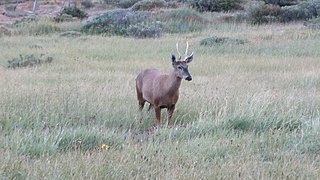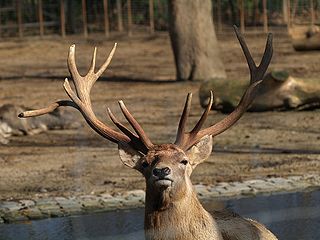
CITES is a multilateral treaty to protect endangered plants and animals from the threats of international trade. It was drafted as a result of a resolution adopted in 1963 at a meeting of members of the International Union for Conservation of Nature (IUCN). The convention was opened for signature in 1973 and CITES entered into force on 1 July 1975.

The Wildlife and Countryside Act 1981 is an Act of Parliament in the United Kingdom implemented to comply with European Council Directive 79/409/EEC on the conservation of wild birds. In short, the act gives protection to native species, controls the release of non-native species, enhances the protection of Sites of Special Scientific Interest and builds upon the rights of way rules in the National Parks and Access to the Countryside Act 1949. The Act is split into 4 parts covering 74 sections; it also includes 17 schedules.

The Ramsar Convention on Wetlands of International Importance Especially as Waterfowl Habitat is an international treaty for the conservation and sustainable use of Ramsar sites (wetlands). It is also known as the Convention on Wetlands. It is named after the city of Ramsar in Iran, where the convention was signed in 1971.
BerneConvention may refer to:

The China–Australia Migratory Bird Agreement (CAMBA) is a bilateral treaty between Australia and China that aims to protect migratory birds and their environment between the two countries. Throughout all six Articles, the treaty defines what a migratory bird is, outlines key prohibitions for both contracting parties and determines the responsibilities of both nations to protect migratory birds and their habitats. The CAMBA was first developed on 20 October 1986, and came into force on 1 September 1988. Eighty-one bird species are listed in the agreement, as shown in the CAMBA Annex listed below.
The Emerald network is a network of Areas of Special Conservation Interest to conserve wild flora and fauna and their natural habitats of Europe, which was launched in 1989 by the Council of Europe as part of its work under the Berne Convention on the Conservation of European Wildlife and Natural Habitats that came into force on 1 June 1982. It is to be set up in each Contracting Party or observer state to the convention.
The European Landscape Convention of the Council of Europe, also known as the Florence Convention, is the first international treaty to be exclusively devoted to all aspects of European landscape. It applies to the entire territory of the Parties and covers natural, rural, urban and peri-urban areas. It concerns landscapes that might be considered outstanding as well as everyday or degraded landscapes. The Convention is aimed at: the protection, management and planning of all landscapes and raising awareness of the value of a living landscape.

The Convention on the Conservation of Migratory Species of Wild Animals, also known as the Convention on Migratory Species (CMS) or the Bonn Convention, is an international agreement that aims to conserve migratory species throughout their ranges. The agreement was signed under the auspices of the United Nations Environment Programme and is concerned with conservation of wildlife and habitats on a global scale.

The south Andean deer, also known as the southern guemal, south Andean huemul, southern huemul, or Chilean huemul or güemul, is an endangered species of deer native to the mountains of Argentina and Chile. Along with the northern guemal or taruca, it is one of the two mid-sized deer in the Hippocamelus genus and ranges across the high mountainsides and cold valleys of the Andes. The distribution and habitat, behaviour, and diet of the deer have all been the subject of study. The viability of the small remaining population is an outstanding concern to researchers.

The Agreement on the Conservation of Gorillas and Their Habitats, also known as the Gorilla Agreement, is a multilateral environmental agreement that binds the parties to conserve gorillas in their territories. It was concluded 2007 under the auspices of the Convention on Migratory Species of Wild Animals (CMS), also known as the "Bonn Convention", with scientific support from the Royal Belgian Institute for Natural Sciences and GRASP. The Gorilla Agreement covers 10 range states and entered into force in June 2008.

Phylloporus pelletieri, commonly known as the golden-gilled bolete, is a species of fungus in the family Boletaceae.
The Cantabrian capercaillie is a subspecies of the western capercaillie in the grouse family Tetraonidae. It is one of two subspecies found in Spain.

The Memorandum of Understanding (MoU) concerning Conservation and Restoration of the Bukhara Deer is a Multilateral Environmental Memorandum of Understanding and was concluded in 2002 under the auspices of the Convention on Migratory Species of Wild Animals (CMS), also known as the Bonn Convention, in collaboration with the Central Asia Programme of the World Wide Fund for Nature (WWF). The MoU covers five range States. As of August 2012, four of them had signed the MoU, as well as a number of cooperating organizations. The MoU came into effect on 16 May 2002.

Azerbaijan ranks fairly poorly in terms of its commitment to the protection of animal welfare and freedom from suffering. It is ranked 36th out of 50 countries on the Voiceless Animal Cruelty Index. According to the Animal Protection Index, it has not pledged support for the Universal Declaration on Animal Welfare, there is no policy or legislation in the country preventing animal suffering by deliberate acts or negligence, and there are no animal protection laws in reference to animals used in farming. The country does have legislation on the conservation of wild animals, which also apply to animals kept in confinement. It implies a duty of care, in limited situations, but its effectiveness is hard to assess.

An Area of Special Conservation Interest (ASCI) is a protected area in Europe or North Africa, part of the Emerald network established by the countries who have signed the Berne Convention on the Conservation of European Wildlife and Natural Habitats. The purpose of the ASCIs is to conserve and protect habitats and species defined in the convention.

Aquilegia ottonis is a species of flowering plant in the buttercup family. It has a broad distribution in Europe; it is native to Greece, Italy, and Albania. Plants produce blue-purple flowers which, based on pollination syndromes, are thought to be pollinated by bumblebees. A. ottonis is named after King Otto of Greece; the specific epithet 'ottonis' is the third declension of 'otto'.

The European Convention for the Protection of Animals kept for Farming Purposes, also known as the Farm Animal Convention, is an animal welfare treaty of the Council of Europe, adopted on 10 March 1976 in Strasbourg, and effective since 10 September 1978.

The Act on Conservation of Endangered Species of Wild Fauna and Flora is a Japanese law on nature conservation intended to protect rare species and ecosystems. The law was passed in 1992 and entered into force the following year.

The International Convention on the Protection of Birds is an animal welfare treaty signed in Paris on 18 October 1950, ratified in 1953 by Austria, France, Greece and Monaco, and entered into effect on 17 January 1963 for 13 European countries. It followed the International Convention for the Protection of Birds that are Useful for Agriculture that was signed in Paris on 19 March 1902, to extend to all species of birds. The text of the treaty was modified for the first time on 1 September 1973, and a second time on 30 March 2016.
















